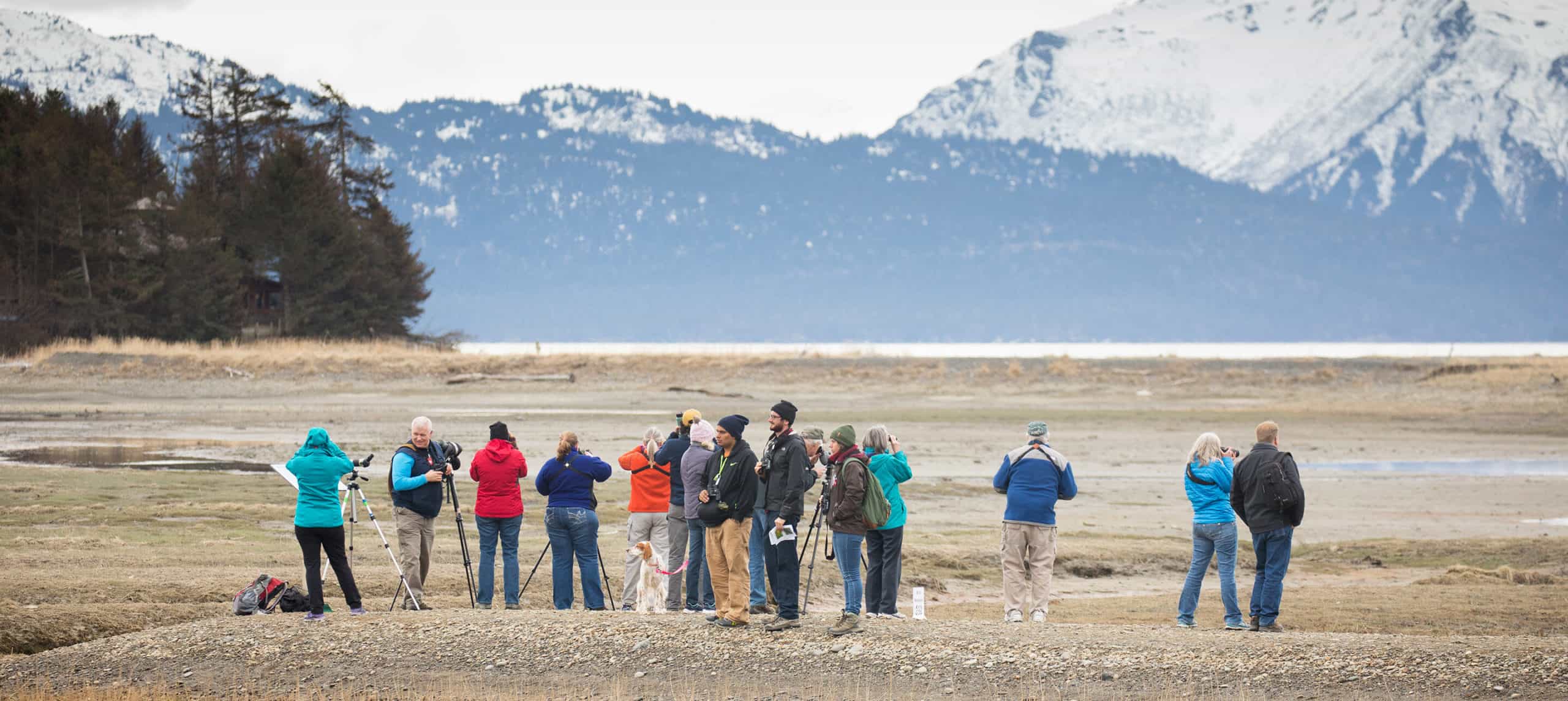Share this article
Local Alaskan communities could capitalize on birdwatching
The money that tourists spend on birdwatching in Alaska could be an untapped source of income for local communities.
Birders flock to Alaska to get a glimpse of rare birds such as bluethroat (Luscinia svecica) or harlequin ducks (Histrionicus histrionicus), which are hard to find anywhere else. Often, they shell out money to get to remote locations that most tourists don’t frequent and to spend time and money in off-the-beaten path communities.
“Anecdotally, we knew birdwatchers in Alaska spend a lot of money and are very different from any other visitor,” said Tobias Schwoerer, a research assistant professor at the International Arctic Research Center at the University of Alaska-Fairbanks. “I knew they’re staying longer and were more independent.”
Schwoerer wanted see how how long birders stay compared to other visitors, how much they spend and how those dollars trickle through the economy. If he could do that, he thought, local communities may be able to capitalize on the tourism dollars coming in, which could help fund habitat conservation.
Conserving wildlife has economic benefits that are often overlooked, Schwoerer said. “It doesn’t really get a lot of credit. It doesn’t show up on any balance sheet. And that’s a big problem,” he said, especially places like Alaska with lots of healthy habitats.

Alaska is the only place in the Americas where birders can see bluethroats.
Credit: Seth Beaudreault/Toolik Field Station
He led a study published in PloS One tapping into data collected from the Alaska Visitors Statistics Program, a statewide survey conducted every four years in which visitors are interviewed as they exit Alaska. Tourists answer questions like how much money they spend, where they traveled and how they traveled. Another question, which Schwoerer’s team focused on, was “did you watch birds?”
The team also incorporated data from the citizen science application eBird to see where and when people were reporting birds in Alaska.
Birders were ideal tourists, Schwoerer and his colleagues found. Compared to the average tourist, they spent 56% more money; engaged in twice as many activities, like guided tours; stayed four days longer; and traveled to more remote areas. In all, birders spent $378 million in the state in 2016.
Most birdwatching was happening in Southeast Alaska, with places like Nome serving as major birdwatching destinations. Local communities stand to benefit economically from ecotourists who want to engage in cultural tourism, too, Schwoerer said, and they can use some of the tourist dollars to boost conservation efforts. Other major hot spots turned up in far-flung spots like the Aleutian and Pribilof islands.
“More detailed, fine-tuned studies can look into what’s driving the demand,” he said, and help Alaska consider new marketing strategies.
“Current marketing strategies are focused on the cruise ship sectors,”” he said. “But the local communities can benefit from the development of small-scale nature-based niche markets like bird watching.”
Header Image:
Birdwatchers look out on the Beluga Slough in Alaska’s Kachemak Bay.
Credit: Lisa Hupp, U.S. Fish and Wildlife Service








